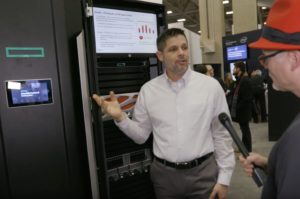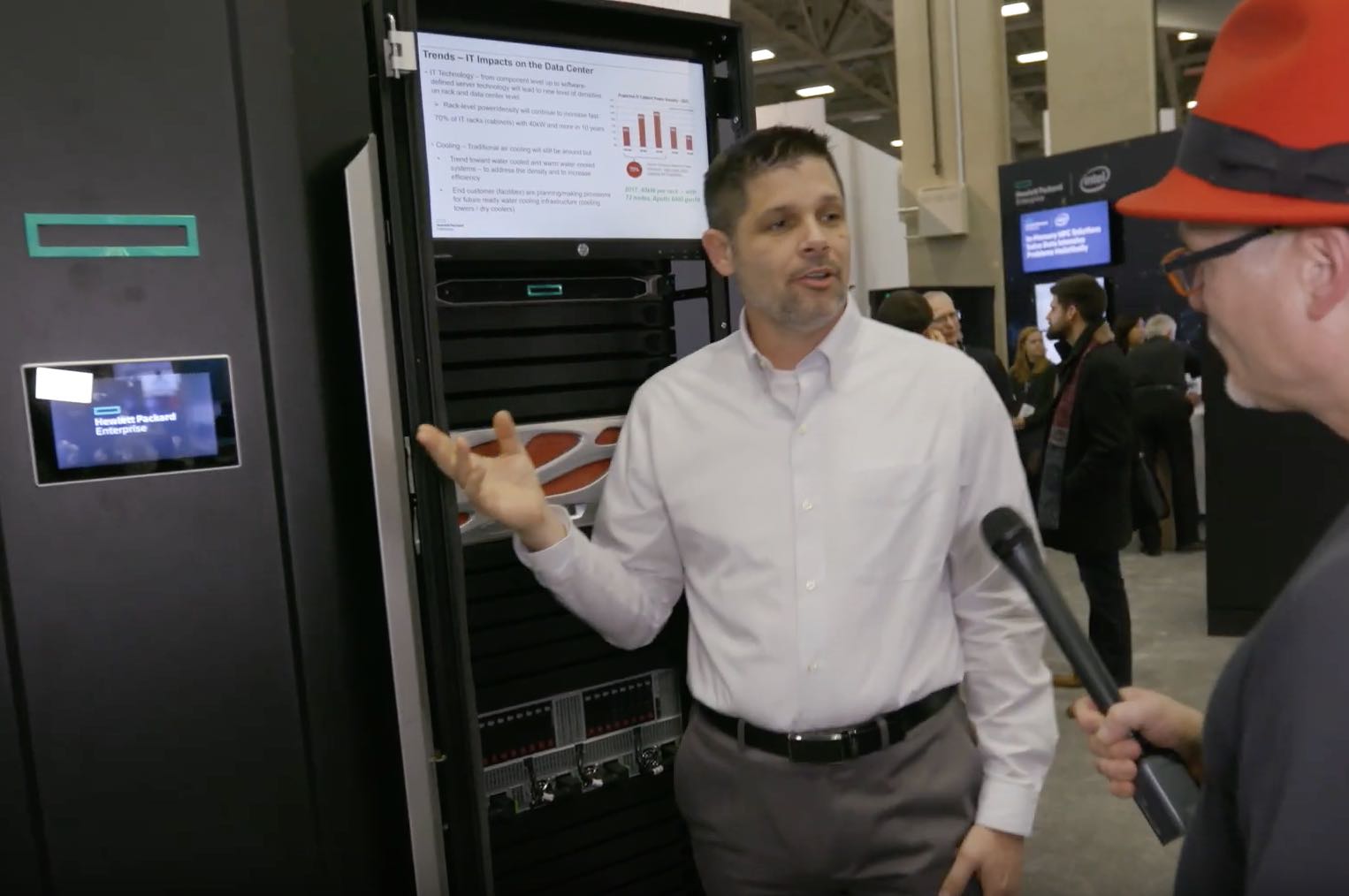 In this video from SC18 in Dallas, Larry Keller from HPE describes the company’s innovative new Adaptive Rack Cooling System for HPC. The HPE Adaptive Rack Cooling System is a closed loop cooling system designed to remove the high levels of heat generated by today’s servers, mass storage and core networking systems. This helps to provide higher density within the data center, and full population of racks without adding additional data center cooling capacity.
In this video from SC18 in Dallas, Larry Keller from HPE describes the company’s innovative new Adaptive Rack Cooling System for HPC. The HPE Adaptive Rack Cooling System is a closed loop cooling system designed to remove the high levels of heat generated by today’s servers, mass storage and core networking systems. This helps to provide higher density within the data center, and full population of racks without adding additional data center cooling capacity.
For instance, HPC users always desire the latest Intel processors for maximal performance. However, data centers may not be structured with today’s performance requirements in mind. The HPE Adaptive Rack Cooling system offers 150kw of simple-to-implement warm water cooling to allow full rack population without changes to the data center cooling infrastructure.
Efficient high-performance computing is a key to success in any business. But it can be daunting to design, deploy, and manage. Make sure that you get the best for your needs. Work with a partner with proven technology and a track record of delivering and supporting successful HPC deployments. HPE has decades of experience in HPC systems, and the proven products based on Intel processors.
Built-in monitoring capabilities allow independent control of each HPE Adaptive Rack Cooling System to manage and adapt air temperatures and energy usage as needed. Full integration with the HPE Cluster Manager allows real-time historical data to be collected and analyzed for trend and predictive analysis. By allowing increased computing power without adding to the heat load within the data center, and minimizing the need for piece-meal data center cooling upgrades, the HPE Adaptive Rack Cooling System can economically extend the life of data centers while providing full compute density.





It’s only standard IT IF the switch airflow matches the direction of the server airflow. If it does not, this system would be a real killer. Watch the airflow on the switches closely.